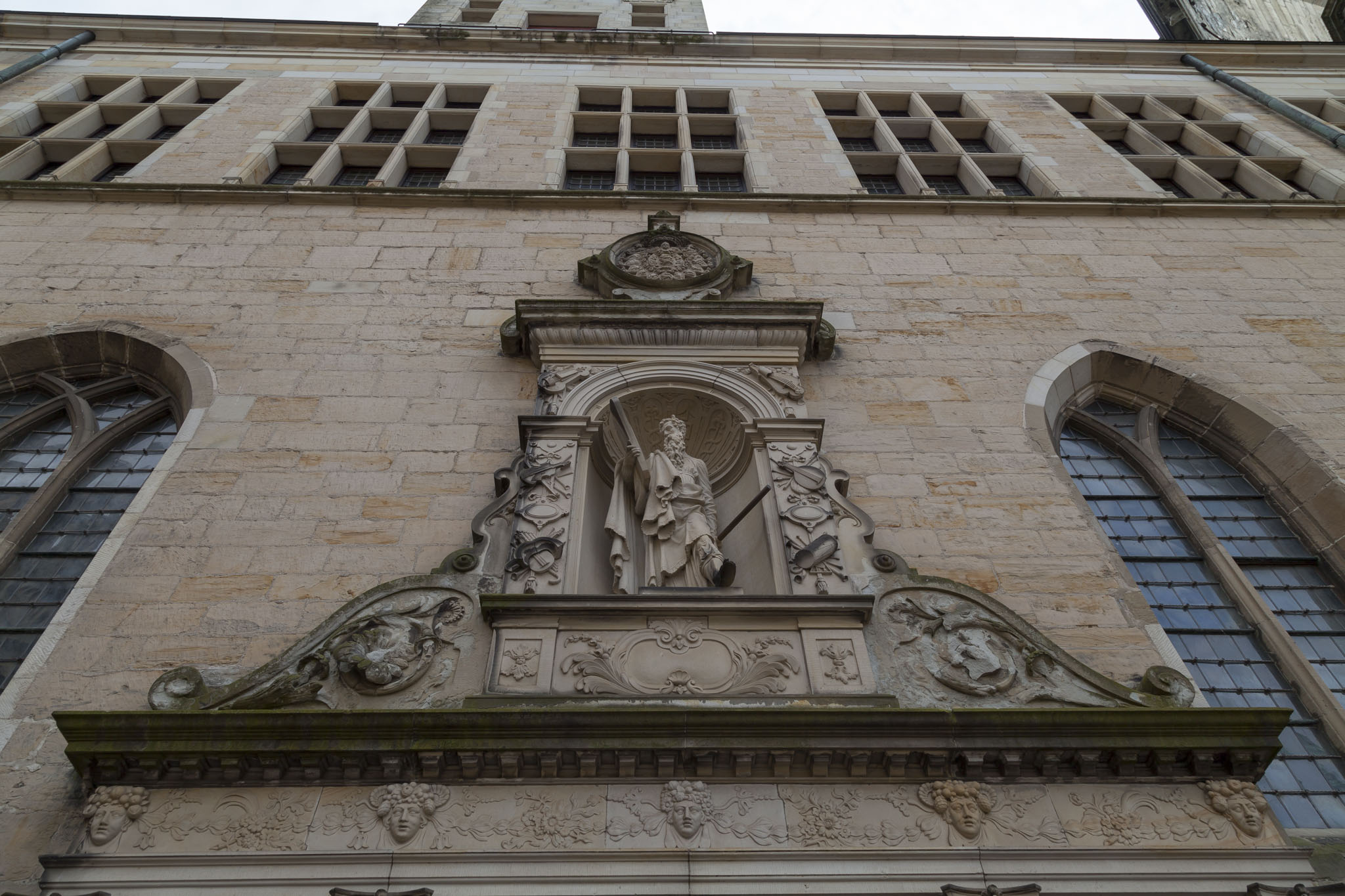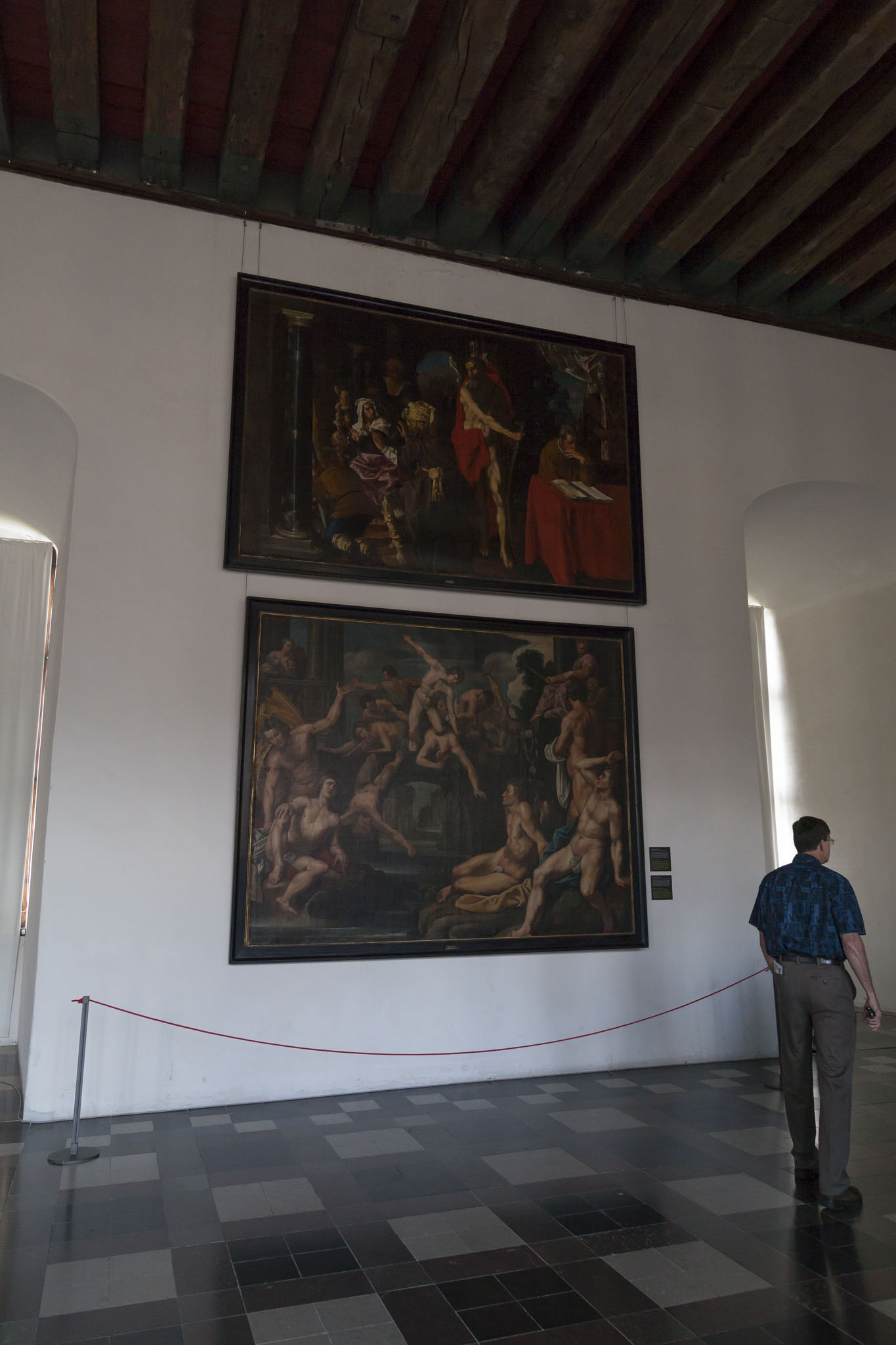Our first two stops in Denmark had been a tour of Frederiksborg Castle and a photo opportunity at Fredensborg Palace. Our third and final historical building of our day trip would be to Kronborg, a stronghold with a Renaissance era castle in the town of Helsingør (or Elsinore), and commonly referred to as Hamlet’s Castle on account of its immortalisation in the Shakespeare play.
But first there was a break for lunch. Billed as a traditional Danish meal it was… interesting. We were told that the meal contained a variety of different types of food in small portions and that this was something that, historically, the Danes ate. Well, as with all these sorts of things you have to accept that things are often played around with for tourists and talking to a Danish friend of mine confirmed that she had never tried most of the food we ate. On the plus side there was some genuine Danish ale to drink; a lager, which isn’t my first choice of drink (or second through twentieth for that matter), but it was refreshing and helped some of the food down. Why does anyone need two different types of pickled herring anyway?
Our coach dropped us off about five minutes away from Kronborg on foot and we promptly made our way towards the castle. Helsingør seemed to be a fairly interesting place from the little we saw of it and is probably worth a visit in its own right.
The approach to Kronborg took us past a scale model of the stronghold, through a couple of gates, and across two moats. The structure’s location and heavy fortifications were due to its proximity to mainland Sweden with whom the Danes had frequently been at war over the centuries. Indeed, when we would get to look inside Kronborg Castle we would discover very little in the way of art or sculptures due to many of them having been taken as spoils of war in battle long since gone.
Inside the courtyard of Kronborg we were introduced to an actor playing Hamlet’s friend, Horatio. He would proceed to take us on a tour of various locations from the Shakespeare play, recounting events from the tale as if they happened to him. I would imagine that if you’re familiar with the story then there was interest in seeing the locations whereas if, like me, you’re not then this provided a compact form of the play acted out by a single person; this turned out to be really quite entertaining and there were even some special effects such as the appearance of ghost at one point.
Our guide, Horatio, wasn’t the only Hamlet actor present. As we came out of one section of the castle and made our way across the courtyard to enter another area we saw several others. Entertainingly, they stayed in character while interacting with tourists in our group and in others. A tennis-type game broke out at one point with the ball getting carried on the wind towards some visitors to the castle; this was met with commands to return the object at once by the queen. Everyone found this very amusing.
Back inside Kronborg we finished up our visit to the castle with Horatio guiding us through the Little Hall and some of the few tapestries remaining from a series commissioned in the 16th century by Frederick II, the Chapel, and, finally, the paintings-lined Ballroom which had been the largest hall in northern Europe when it had been built.
While not the most visually impressive castle inside, Kronborg was architecturally very interesting and its layout of moats and gates to the entrance was particularly nice. The historical connection to Shakespeare was good to experience and as part of a full day including the other castle and palace we’d visited this was an excellent excursion for our day in Denmark.













































